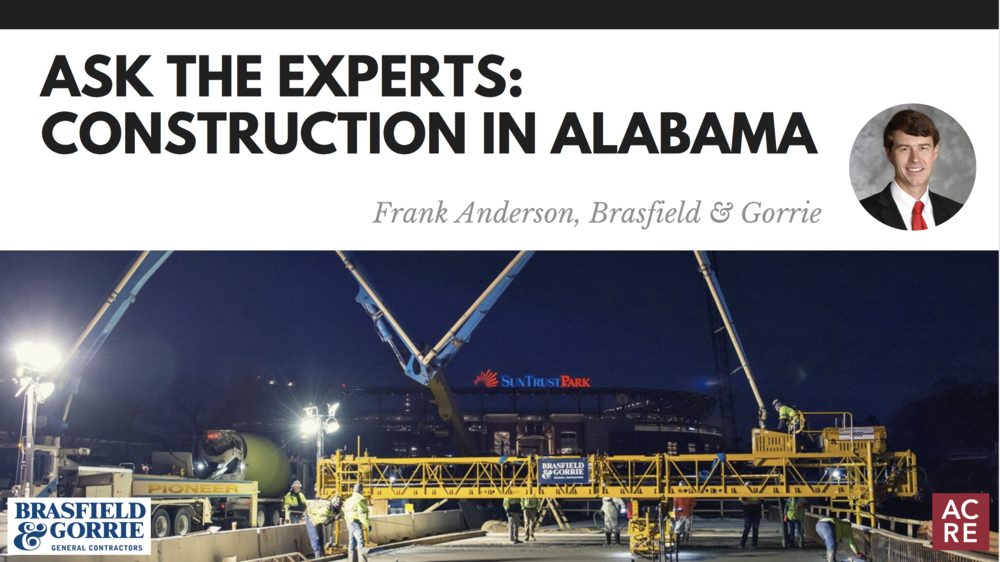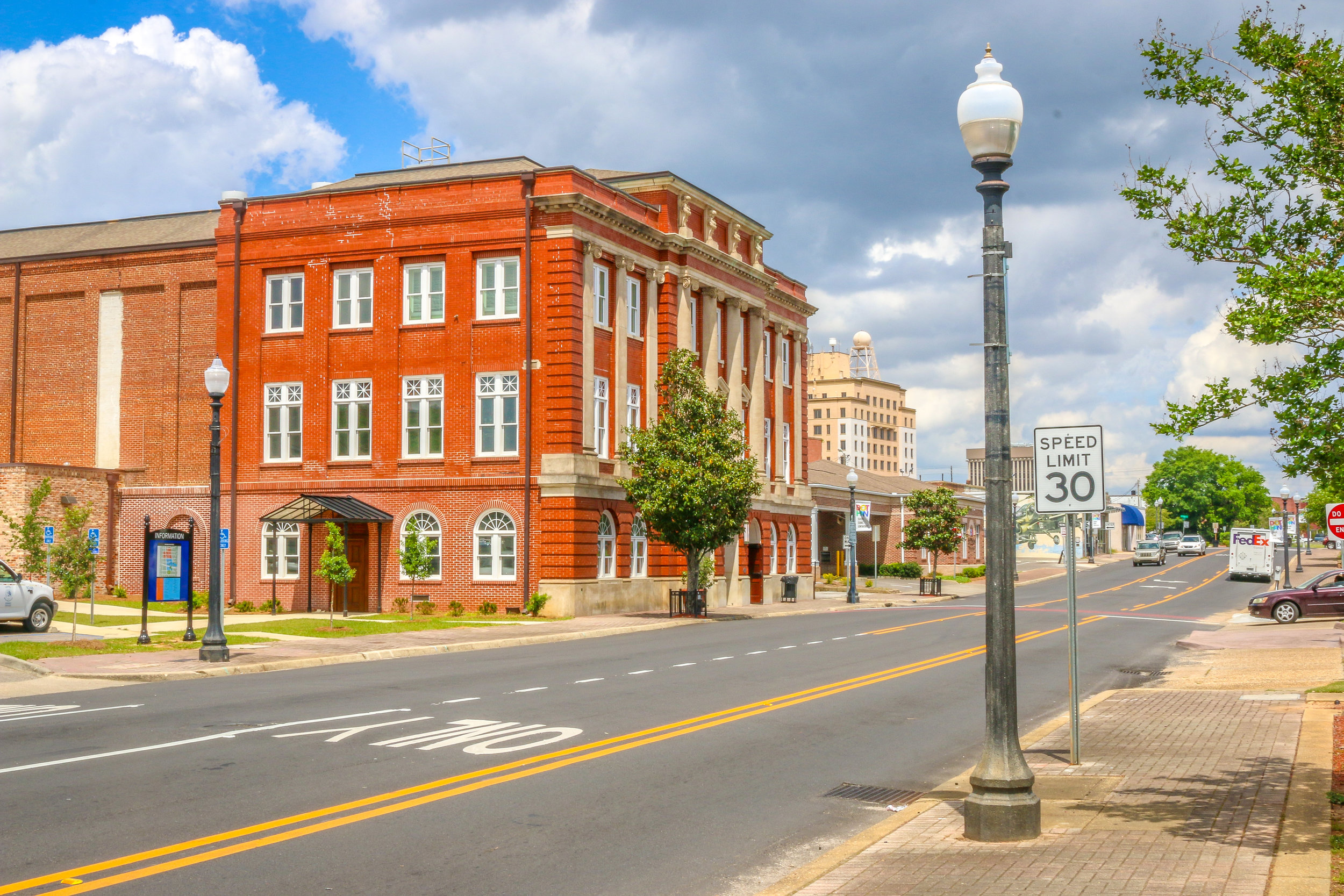Frank Anderson, business and development manager, at Brasfield & Gorrie, LLC provides some of his expertise on what issues the Alabama construction industry is facing and how Brasfield & Gorrie is keeping up with construction trends.
According to the ManpowerGroup, skilled trades are currently the most difficult positions to fill in the United States. Is this skilled workforce issue affecting your company? If so, how have you adapted to address it?
FA: Both skilled and unskilled labor is in short supply across the Southeast. It is a major driver of the cost escalation we are seeing throughout the construction industry. Brasfield & Gorrie is fortunate to have built a strong workforce over the years. As a self-perform contractor, we are able to perform scopes of work that other contractors subcontract. This allows us to drive the project schedule and mitigate risk for our clients, while often generating project savings. We strive to create a company culture in which every employee is valued and an environment in which people want to work. This includes a firm commitment to employee safety, craft training programs, leadership development, social outings, and a philanthropic culture that gives back to each community we work in. Finally, focused recruiting efforts are critical to staff a growing company. We have invested in individuals solely dedicated to recruiting field-based employees across our footprint.
Other than workforce shortage, what is the biggest challenge the construction industry is facing during this current growth cycle?
FA: Material cost escalation has also generally increased during the current economic cycle. Some of this cost escalation has been attributed to tariffs and political uncertainty, while some has likely resulted from a robust construction environment. With both labor and material simultaneously increasing, project-wide costs continue to creep up, representing a risk to both owners and contractors. We monitor several economic and construction-specific cost indices to help anticipate possible cost escalation in order to hedge project risks for our clients. Some of these indices have shown more than 5 percent annual escalation rates on a work in the Southeast, so it is an important factor to consider at the outset of any project.
What new and emerging technology have you adopted/plan to adopt? How will it benefit you and your clients?
FA: Building Information Modeling (BIM) has emerged as an incredibly useful tool for us and our clients. Three-dimensional models allow clients to quickly understand proposed designs and make accurate decisions. Virtual reality technology allows clients to virtually tour their facilities prior to construction and make changes if needed. These virtual models accelerate the preconstruction process and alert project teams to any design conflicts prior to construction. Once the job moves to construction, clients see the direct benefits in time and cost savings.
Prefabrication is another innovation we have utilized to benefit our clients. Prefabrication involves the construction of certain systems, assemblies, or entire rooms/structures offsite where they can be constructed in a controlled environment such as a warehouse. Once complete, the assembly is shipped to the jobsite and installed in a short period of time. Some types of construction benefit from prefabrication more than others. Preconstruction offers several advantages for our clients. Prefabricated work is typically repetitious (think assembly line), so quality tends to increase while schedule tends to decrease. There is less waste involved, which helps drive down project costs. Finally, prefabrication can help level labor resources because assemblies can be fabricated and stored despite weather or other delays at the physical jobsite. This helps maximize productivity, which ultimately benefits our clients through cost and time savings.
From your perspective, how much longer will we see growth in construction activity in Alabama?
FA: Demand remains strong for construction services, although we are hearing more clients begin to consider the impacts they would face should we see a slowdown. It is impossible to predict exactly how long the current growth cycle will last, but most industry experts tend to agree that any pullback will be more of a slowdown and not the drastic decrease we saw in 2008.
What did the construction industry learn after the last economic downturn that will make them more prepared when the market inevitably slows down?
FA: While I can’t speak for other firms, we have attempted to grow at a reasonable rate while keeping our corporate structure lean and in line relative to our volume of work. We have made strategic investments—such as equipment and concrete formwork—in key areas of the company that should benefit us during periods of slower growth.
How does the business climate in Alabama help or hinder the construction industry?
FA: Alabama’s business-friendly environment has certainly benefited the construction industry. Macro factors such as low tax rates and high percentage of open-shop workforce, coupled with local and state economic development efforts, have contributed to several major projects such as Airbus, Toyota-Mazda, and many others choosing to locate in Alabama. These projects have long-term benefits for the state and provide near-term construction opportunities for contractors and subcontractors. Additionally, the recent Rebuild Alabama infrastructure funding bill was a big step forward to generate long-term value across the state by spurring further economic development.
While I’d classify the overall business climate as positive, several challenges remain. A few challenges we have observed firsthand include limited procurement options for public agencies and restrictive immigration policies that limit workforce availability. Each public agency should be allowed to decide if it is in its best interests to procure construction services through the traditional “hard bid” model or through alternative methods such as design-build or construction manager-at-risk. Unlike the vast majority of other states, Alabama’s current legal structure generally does not permit alternative delivery. Restrictive immigration policies have further reduced the workforce in an already tight market. Legislators should work to find a solution that protects citizens while also allowing for much-needed additional workers.
Headquartered in Birmingham, Ala., Brasfield & Gorrie, LLC is one of the nation’s largest privately held construction firms, providing general contracting, design-build, and construction management services for a wide variety of markets, including healthcare, commercial, institutional, federal, municipal, industrial, infrastructure, and water/wastewater treatment. Brasfield & Gorrie is a member of ACRE’s Alabama Cabinet and Frank Anderson serves on ACRE’s Advisory Board of Trustees.




